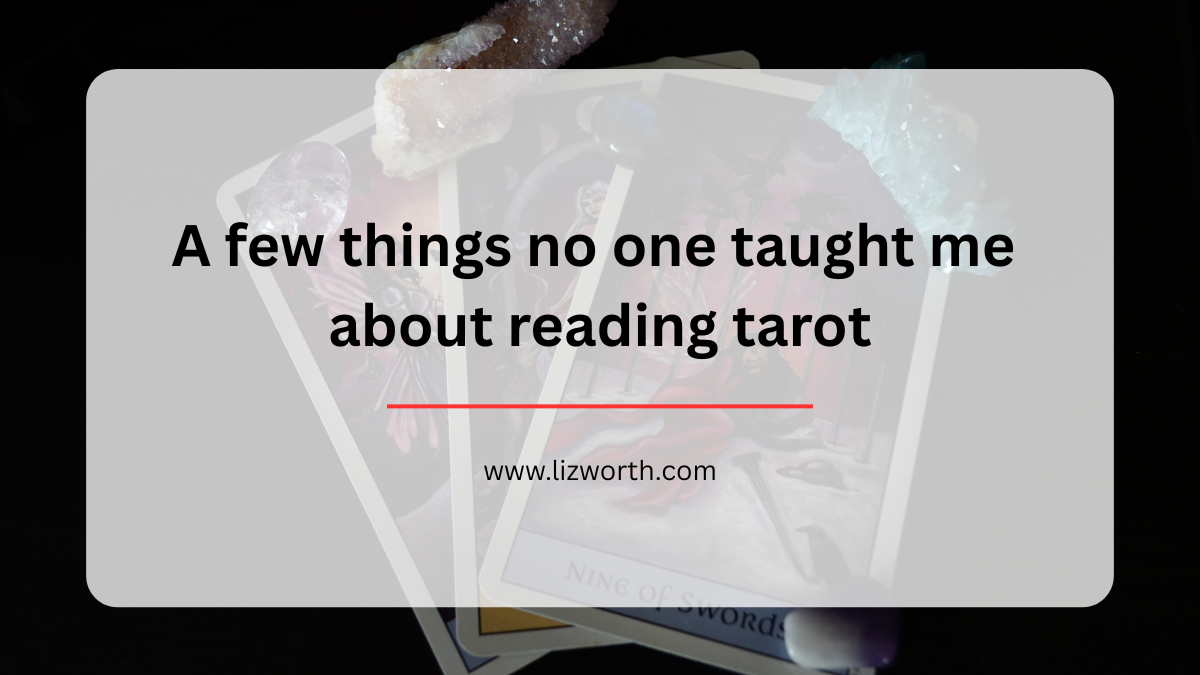A few things no one taught me about reading tarot

There are so many things tarot books don't always teach us. Here are a few tarot tips I learned along the way.
Recently, I’ve been trying to think about how my tarot practice evolved into what it is today in terms of the habits and beliefs I’ve built around my processes.
There are so many things that we learn about practices like tarot on our own, through trial and error, experience and reflection.
It’s not possible to learn everything from a teacher, mentor, class, or book. Our knowledge builds from so many different sources, influences, and experiences.
Here are a few things no one ever taught me about tarot, but that I learned to do along the way all the same:
1. It’s okay to take a moment to study the cards you’ve pulled before delivering any messages.
When I’m reading tarot for someone, I don’t launch into the reading the moment the cards are pulled. I always take my time to see what’s shown up, look for patterns or other interesting details, and consider the elements that are present.
Sometimes this long pause makes querents nervous, however: For a nervous sitter, that silence might be misinterpreted as bad news. It helps to let your querent know that you may take a moment to quietly reflect.
When I shared my quiet approach on social media recently, I was surprised by how many messages I received by people who were relieved to hear this.
There can be a lot of (unnecessary) pressure to perform a reading in a certain way – especially quickly and instantly.
So know this: We all develop our own tarot reading styles over time. It’s totally fine for tarot readers to set their own pace in a reading. If you need a minute off the top, take it. If you’re ready to launch into your messages, that’s fine, too. There’s no one way to begin a reading.
2. Want to read tarot professionally? Get a reading from time to time.
If you want to read tarot professionally (or even as a hobby for friends), it really helps to get a tarot reading for yourself every once in a while.
You can learn so much about what goes into a tarot reading (good or bad) by hearing how other readers deliver tarot’s messages, handle questions, and pace their sessions. It gives you a sense of what it feels like to receive messages as well, for better or for worse.
It’s also a great way to invest in your personal growth and build your capacity for self-reflection.
3. Validation goes a long way.
Reading tarot is often less about impressing a querent with some piece of hidden knowledge, and more about witnessing a specific moment in someone’s life that is happening right here, right now.
Sometimes people bring complicated, challenging realities to their tarot readings. You might hear things that you haven’t experienced for yourself, and maybe can’t always relate to. But you can hear the hurt in a querent’s voice, and see the concern in their eyes.
Being patient and respectful as you listen to a querent’s story goes a long way. Offering a word of validation that what they’re going through is tough, such as, “That sounds hard. Thank you for sharing that with me,” can mean the world to someone.
Until next time,
Liz
Categories: : learn tarot, tarot for beginners
 Liz Worth
Liz Worth 